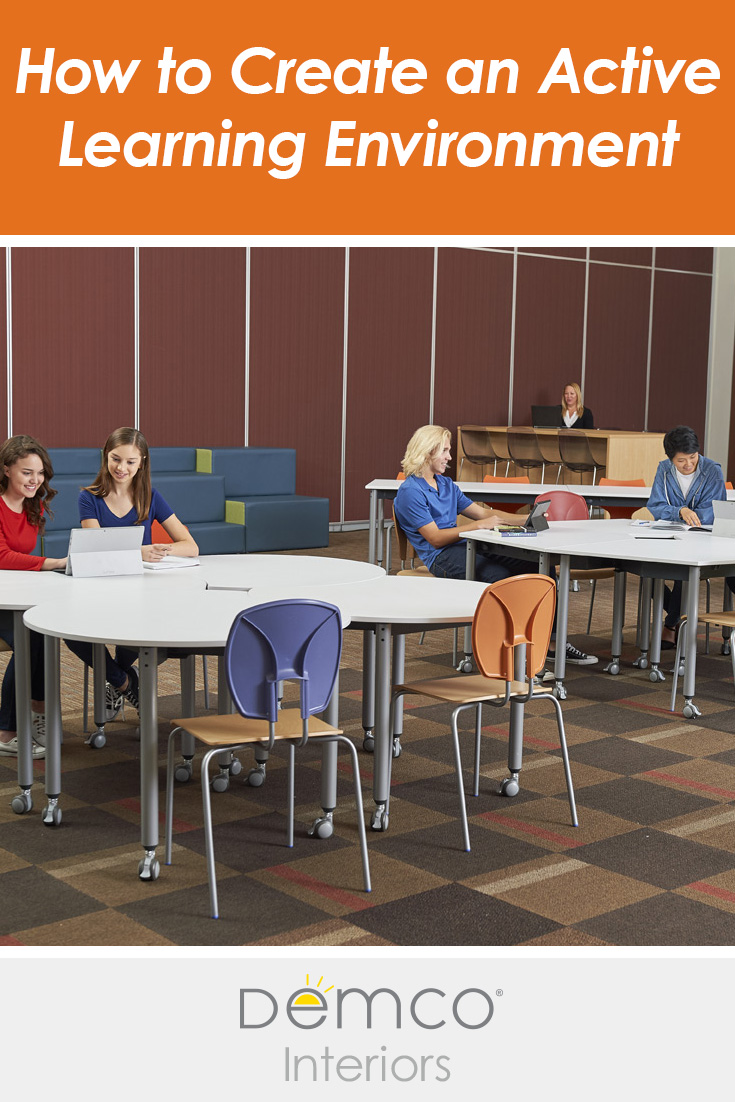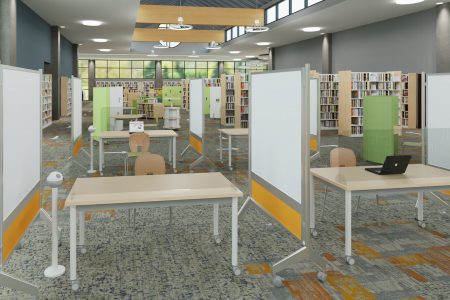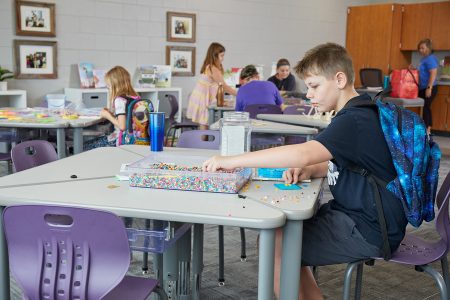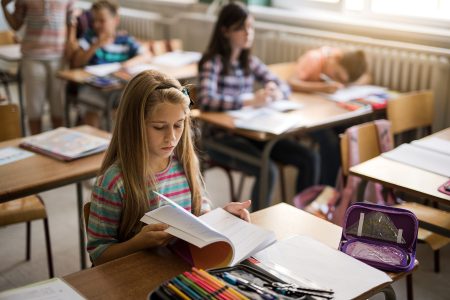 Modern classrooms are moving away from a lecture-based, teacher-led instructional model and moving toward teaching methods that incorporate active learning. Active learning has been defined as “anything that involves students in doing things and thinking about the things they are doing” (Bonwell and Eison, 1991). It is an approach to teaching that engages students in meaningful learning activities and interactions that activate higher levels of thinking. Learning environments that promote active learning also promote inclusivity, as they encourage all students to feel welcome.
Modern classrooms are moving away from a lecture-based, teacher-led instructional model and moving toward teaching methods that incorporate active learning. Active learning has been defined as “anything that involves students in doing things and thinking about the things they are doing” (Bonwell and Eison, 1991). It is an approach to teaching that engages students in meaningful learning activities and interactions that activate higher levels of thinking. Learning environments that promote active learning also promote inclusivity, as they encourage all students to feel welcome.
Taking an Active Learning Environment Approach
The active learning approach is associated with higher levels of engagement, and librarians and educators can help their communities by developing learning environments that help foster it. Along with engaging students in experiential learning activities, such as makerspace activities, group work, virtual and augmented reality experiences, games, and poetry slams, educators can implement the following active learning teaching methods:
- Think/Pair/Share: In this teaching strategy, instructors ask students to think about their response to a question or prompt, then pair up with a classmate and disclose what they were thinking. The instructor then asks students to share their thoughts with the entire class.
- Jigsaw: In this teaching strategy, students work in small groups. Each member of the group is given a section of a larger project that they research and then share with their group. The group then works together to understand how each part relates.
- Gallery Walk: In this teaching strategy, students walk around the room and view posters their classmates have worked on or content the instructor has placed around the room. Students answer questions about the displayed content.
- Muddiest Point: In this teaching strategy, the instructor asks students to identify what was least clear to them from the class session. Students then hand in their muddiest point as they leave class.
Designing the Physical Learning Environment
To be truly effective, the design of an active learning environment needs to complement and support the active learning pedagogy. Here are some key furniture and environment considerations to take into account:
- Traffic Flow: Students need to be able to move around the room. The furniture in the room needs to be flexible and mobile in order to adjust to the various active learning teaching methods. When planning for traffic flow consider the following:
- Cords or power sources should be strategically placed in furniture and around the room so as not to cause trip hazards.
- Look for furniture on casters and stackable chairs, which will allow them to be moved to accommodate differing daily needs.
- Autonomy: Often, active learning inside and outside the classroom is created and hosted by students themselves. Students need to be given the independence to create the learning spaces they need and not be boxed in by inflexible learning environments. For example, while students need quiet study space in the library, they also need spaces for small groups and large groups. Flexible, mobile furniture allows students to reconfigure spaces to be used for multiple purposes. When planning for autonomy consider the following:
- Modular furniture can be mixed and matched to allow for various learning environments. Look for easily movable furniture or furniture on wheels, such as Muzo Kite® Tables, which fit together to form larger tables, but can also be folded, nested, and rolled aside when an open space is needed.
- Offer a variety of seating choices, including active seating, lounge seating, and powered furniture.
- Collaboration: The ability to interact with peers is an important part of an active learning environment. When thinking about collaboration consider the following:
- Tables that can be reconfigured for collaboration, no matter what size the group, will foster better group dynamics.
- Whiteboard tables allow for spontaneous collaboration and ideation during group work.
- Individual study space that includes whiteboards or whiteboard tables can be converted into small-group space.
- Technology: In the 21st century a lot of collaboration occurs virtually. The right tools can facilitate collaboration and prepare students to be career-ready.
- Include a space where students can record themselves with media production equipment.
- Have a presentation space for individuals or groups to practice. This can be accomplished by outfitting the space with tables and chairs that can easily be moved out of the way when the space is needed for larger presentations.
- Collaborative media tables allow students to share and present their work.
- A space that is ergonomically configured for using laptops or tablets will encourage students to stay and work in the library or classroom.
Planning for active learning through space considerations is necessary for success. Without considering space requirements, your active learning environment may not be so active.
References and Resources
- Furniture Safety Tips for an Active Learning Environment
- How to Make Space for Active Learning in Your Library
- Bonwell, C. C., & Eison, J. A. (1991). Active learning: Creating excitement in the classroom (ASHE–ERIC Higher Education Rep. No. 1). Washington, DC: The George Washington University, School of Education and Human Development.
- The Harriet W. Sheridan Center for Teaching and Learning. (2018). Brown University. Retrieved from brown.edu/sheridan/inclusive-teaching-through-active-learning
Dr. Lauren Hays
Latest posts by Dr. Lauren Hays (see all)
- How Library Furniture, Space Design, and Technology Support Informal Learning - May 31, 2019
- How to Create an Active Learning Environment - December 6, 2018




